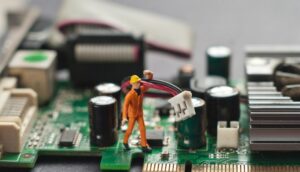Impact PCB Cost of Different Technical Factors
2022-10-07
PCB design and manufacturing involves many different technologies, depending on the different application scenarios of the board. The technology required is also different, such as everyday consumer electronics and industrial-grade PCBs, industrial-grade circuit board manufacturing costs and technical requirements are obviously relatively high.
The main factors affecting the cost of PCB is the material, size, number of layers, surface treatment and vias, of course, there are other factors, depending on the requirements of the PCB design.
Material selection
The cost of different PCB material selection is also different. the most commonly used material for PCB is FR-4, for different application scenarios, the factors affecting the choice of material may be the following.
-Temperature requirements
-Heat transfer
-Signal performance
-Mechanical properties
PCB Size
The size of a PCB will generally be determined by the number of circuits required for the respective device. For small devices such as cell phones, wearable devices, etc. require relatively few components, while the size of the PCB in larger devices will be larger.
Number of layers
Another important factor that affects the price of circuit boards is the number of layers. Obviously, the complexity of production of multilayer circuit boards (greater than two layers) also leads to an increase in its cost. Overall, each additional two layers may lead to an increase in cost of 30% to 40%, although the specific circumstances need to be evaluated.
Surface treatment
PCB production on the need to consider a factor is the surface treatment technology. The most common surface treatment is HASL, which provides good solderability, for higher requirements of the PCB, ENIG will be a good choice, but the cost is also relatively higher.
Vias
The size and number of vias is also one of the important factors affecting the cost of PCB production. More vias means more work. The general size of the via diameter is not less than 0.3mm, less than this value may require the use of light drilling equipment. Different types of vias require different technologies for HDI PCBs involving vias such as blind vias, micro vias and buried vias, which have certain requirements for the PCB manufacturer's manufacturing capabilities.
Minimum track space
In order to make the effective transmission of current on the PCB, the board must be designed with sufficient alignment width, the alignment width to a certain extent determines the carrying capacity of the board.
PCB thickness and aspect ratio
The standard thickness of the PCB is 1.6mm (0.063 inches). In general, the cost of thicker circuit boards will be more expensive. Thicker boards also have a larger aspect ratio, and it can be significantly more expensive. For your board thickness manufacturing requirements, consult the PCB manufacturer for more information.
Other custom requirements
Unique circuit board designs often require additional processes, such as
-The board is designed with many vias beyond the standard specifications
-Combining multiple designs on a single board
-Additional solder resist layer gaps and thicknesses, etc.
To avoid high costs due to unique PCB design requirements
Calculate the potential items that may exist in your design before production and communicate carefully with your PCB manufacturer to avoid doubt. How to reduce the total PCB cost can be found in this article.
PCB different standard manufacturing in KingPCB
At KingPCB, we work with each customer in a way that will ensure that we get the boards they need in the way they need them most. Contact us today to get a quote on your project!



